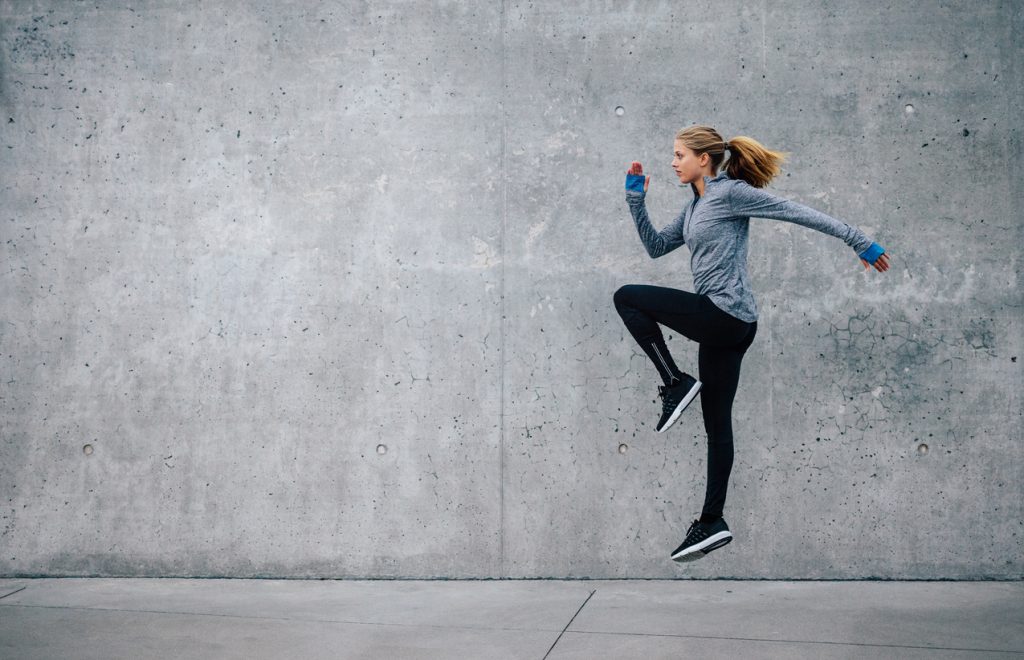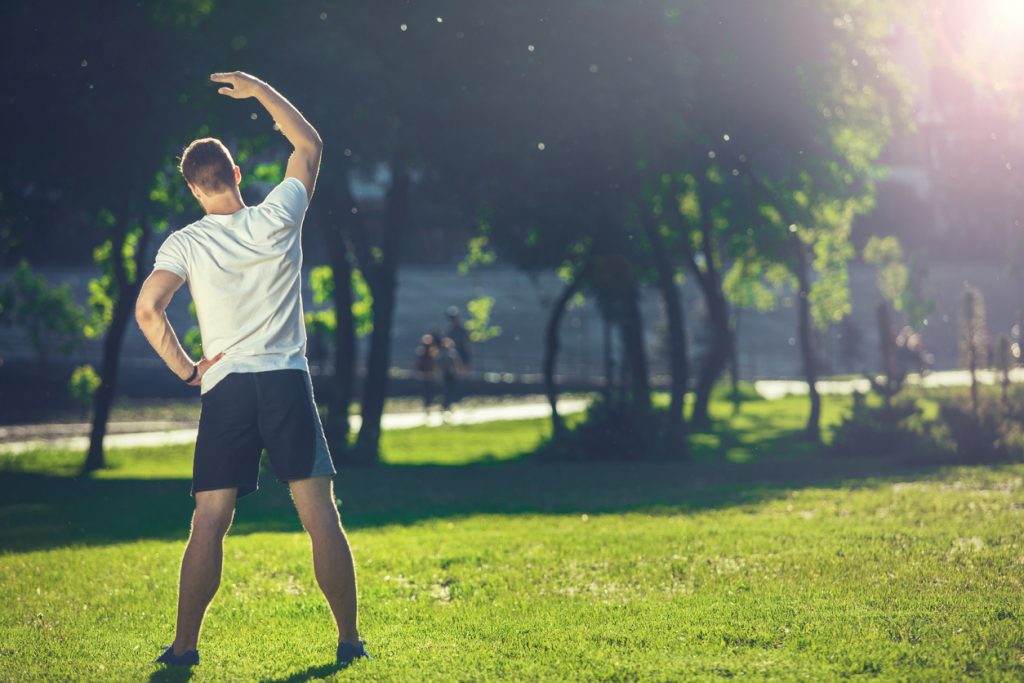Before practicing training, it should be systematic to proceed to a warm-up. This type of exercise should be done 5 to 10 minutes beforehand. It is generally characterised by cardiovascular exercises. Some examples of ways in which exercisers can warm up their muscles before a workout are: cycling, rowing, treadmill or elliptical. These are all methods that are well suited for a ten minute warm up.
By performing simple, unloaded movements, every joint from the head down to the neck, all the way through the body and ending at the foot can be mobilised. About ten movements per joint is highly recommended. To get some ideas for the head, for example, sportsmen and women can do some simple movements by turning the head slowly from left to right, making small circles with the arms. Raising the head to the sky and then looking at the ground is also a simple but effective exercise. For the arms, there are several possibilities, but always start with the shoulders and work your way up to the arms and finish with the wrists and also the fingers. Do a small series of 10 exercises per joint to start the warm-up.
Why insist on a warm-up?
The main objective of warming up is to allow each joint to move as well as possible according to its anatomical possibilities. And of course, the warm-up is performed according to the type of training. Each discipline requires a specific warm-up. The number of sessions depends on the muscle groups to be worked on.
In order to avoid any risk of injury during training, it is possible to optimise the warm-up. Various methods can be used to develop the personal performance of each athlete. Here are some movements that can be very well combined with warm-ups: plyometric movements such as jumps, push-ups, explosive pull-ups, usually with elastic bands, and many others.
The important thing in all of this is to perform movements as close as possible to the exercise that is to follow, but with stretching and muscle contractions at high speed. According to research, all these pre-workout exercises prepare the nervous system for the physical efforts that the body will undertake. In this case, doing 2-3 sets of 5 repetitions will be welcome.
Once the muscles are warmed up, the next step can continue. This applies especially to the first exercises of the session. It is advisable to always start with the bar empty, then gradually increase the load until the workload is reached. Please note that you should never exceed 5 sets of 6. 8 repetitions in the warm-up. When performing these movements, it is essential to ensure proper technique, otherwise there is a risk of injury.
The success of the warm-up session is necessarily the result of the synchronisation of the most important exercises at the beginning of the session. In this case, it is not necessary to start on a rising scale with each new exercise.
Is stretching not necessary in the warm-up?
Stretching is not welcome during the warm-up phase. Why not? Because there is no need to stretch. Stretching is static in the warm-up. They do not prepare the body for dynamic training. Worse, stretching decreases muscle tone and gradually eliminates body strength.
This body practice is designed to develop body flexibility. It prepares the body for exercises that promote recovery from physical exertion. As stretching is mainly about flexibility, suppleness, mobility and softening, it is not appropriate during the warm-up.
Distinguish warming up from stretching
Be careful, you must know the meaning of these two terms in the world of sport. It should be remembered that the warm-up is a precaution, more precisely, to be taken by the sportsman by preparing beforehand his nervous system that his body is going to undergo some shaking movements. Mobilise the cardiovascular system in advance to avoid accidents during training. The warm-up allows to put oneself in a good personal condition for success according to the sport session to be practiced.
Stretching is the practice of movements that promote mobility and flexibility of some parts of the body, especially the parts targeted by the training session. Stretching is also called softening, a term that is no longer used.
Conclusion
In conclusion, before any training session, warming up the body is essential. The warm-up should also be carried out from top to bottom, i. e. from the head to the foot and gradually down to all parts of the body. During a warm-up, the joints are the main targets, such as the neck, shoulders, elbows, hips, knees and ankles.
Before warming up, always do a few minutes of exercise on a bike, rowing machine or mat to wake up the muscles and prepare them for the warm-up.
Be careful not to confuse the two terms: warming up and stretching because they are two different things. They are two very different activities that complement each other. Warming up always comes before stretching.
So be careful, neither warming up nor stretching can be done until after an exercise to wake up the muscles of the body. Warning the nervous system of the next steps in the session through the warm-up. There are several methods available for this practice: running, walking on a mat, cycling, etc.
For each warm-up session, it is recommended to do 5 sessions for each exercise and of course to favour the joint areas in order to avoid injuries during the training. It is very important to follow these instructions even if you are not a professional athlete or a medal winner, because the well-being and health of your body depend on it. Aware of the importance of the warm-up, it is certain to succeed in the sports field that one undertakes thanks to the performance following the well prepared body.



